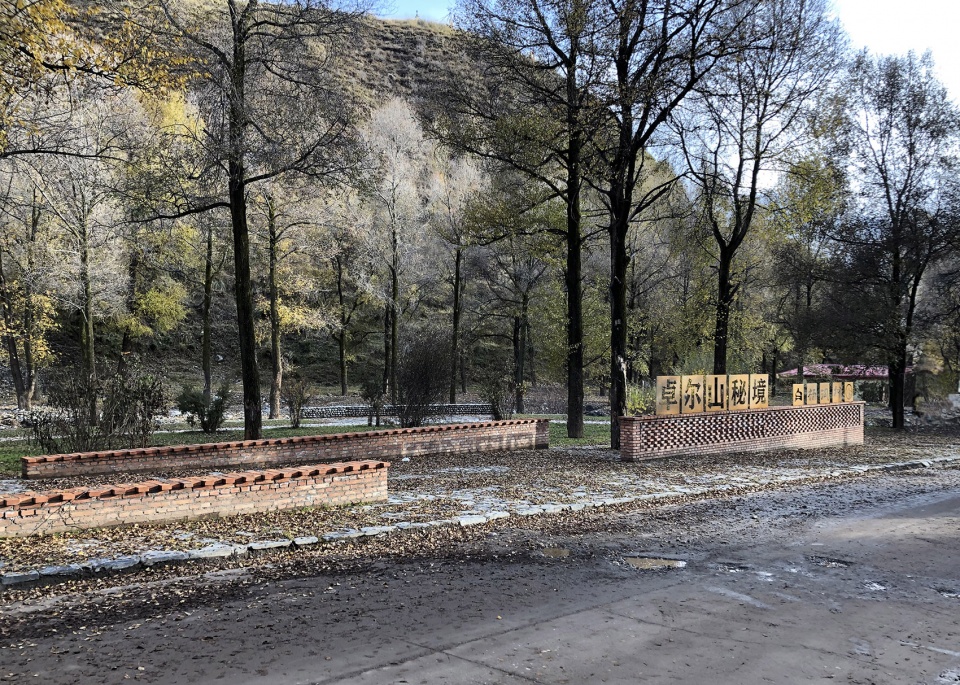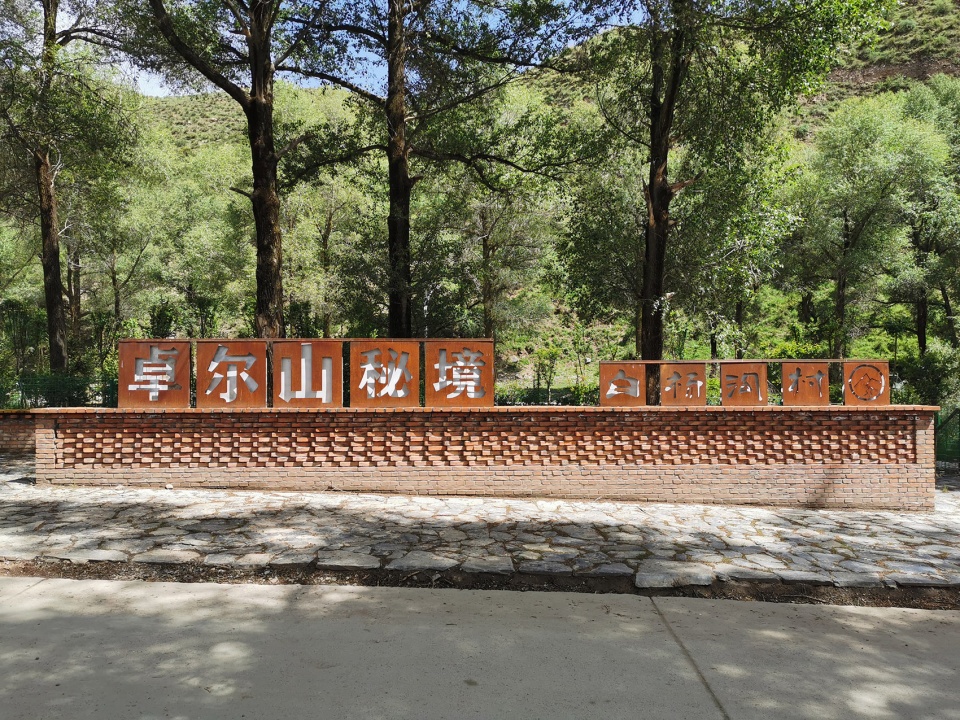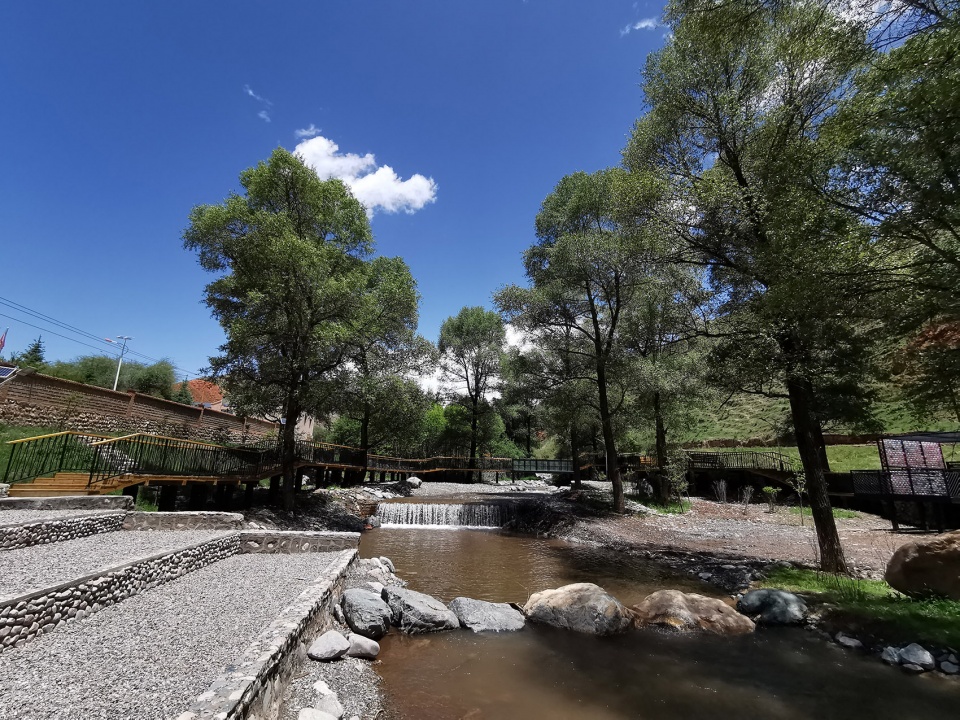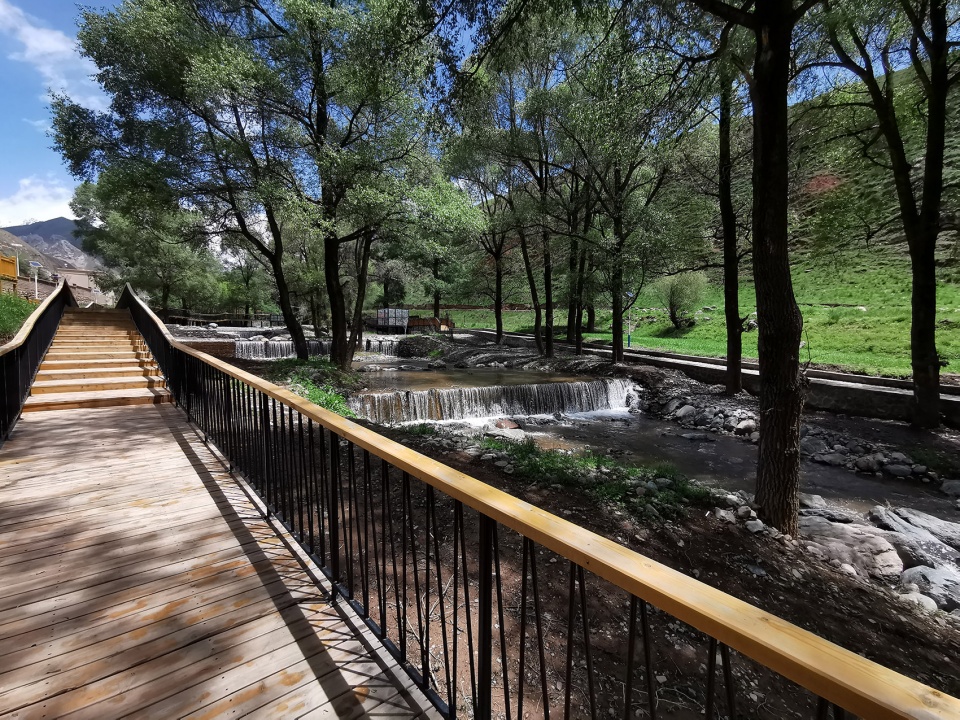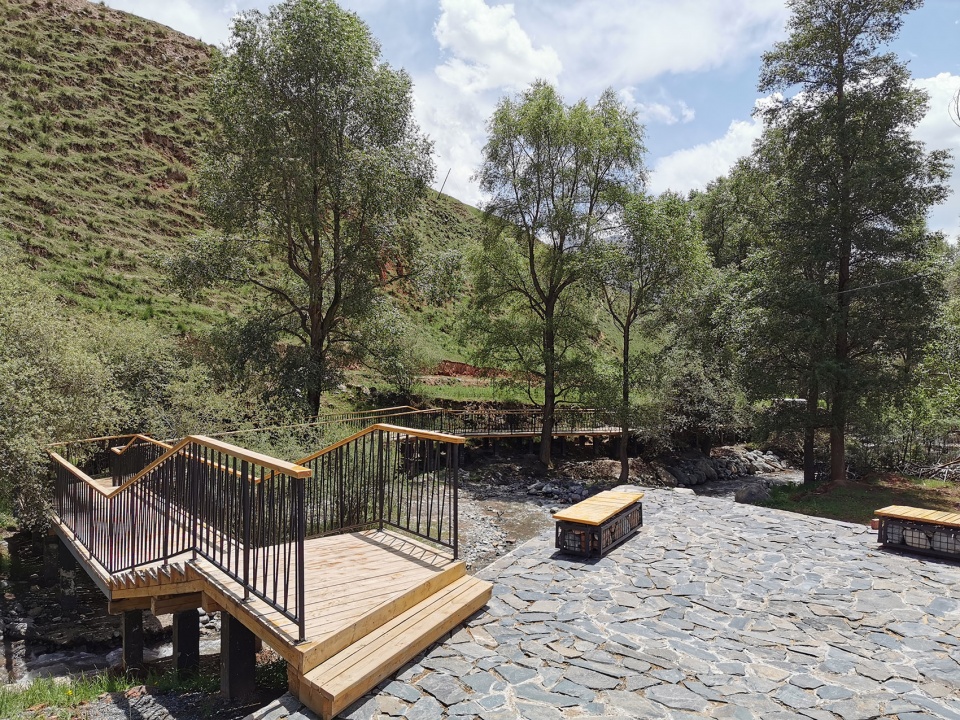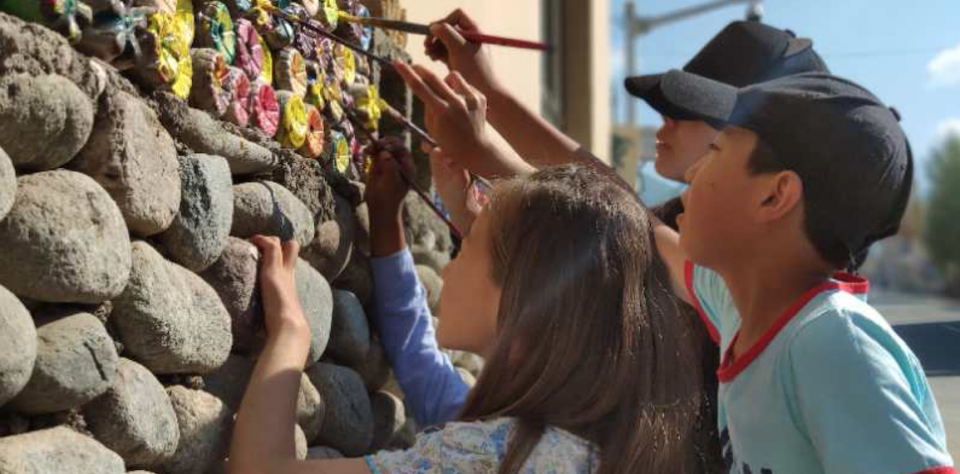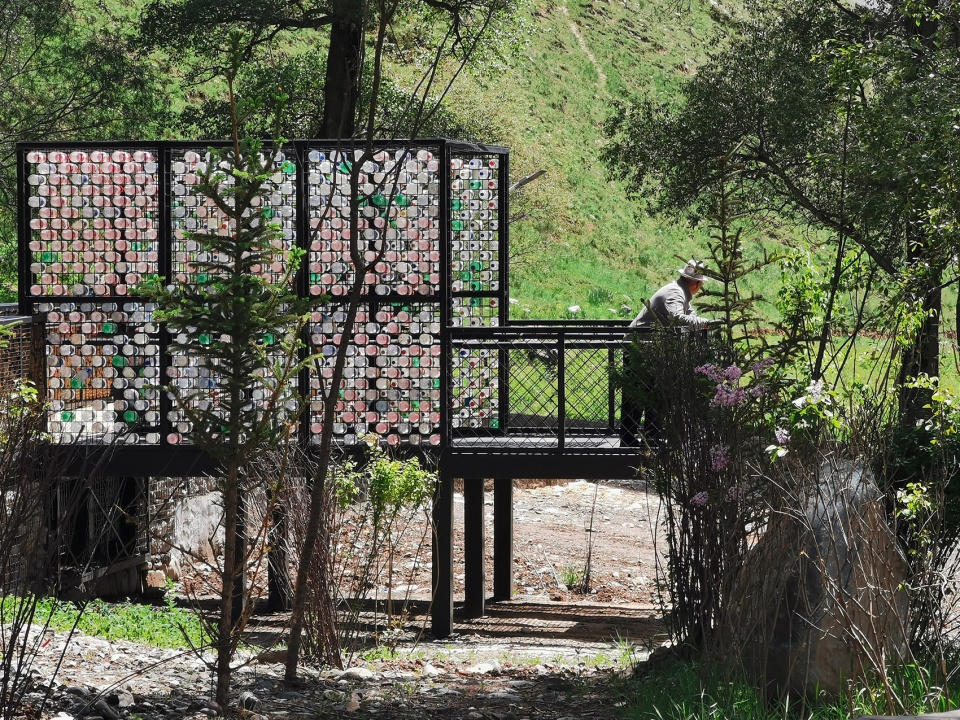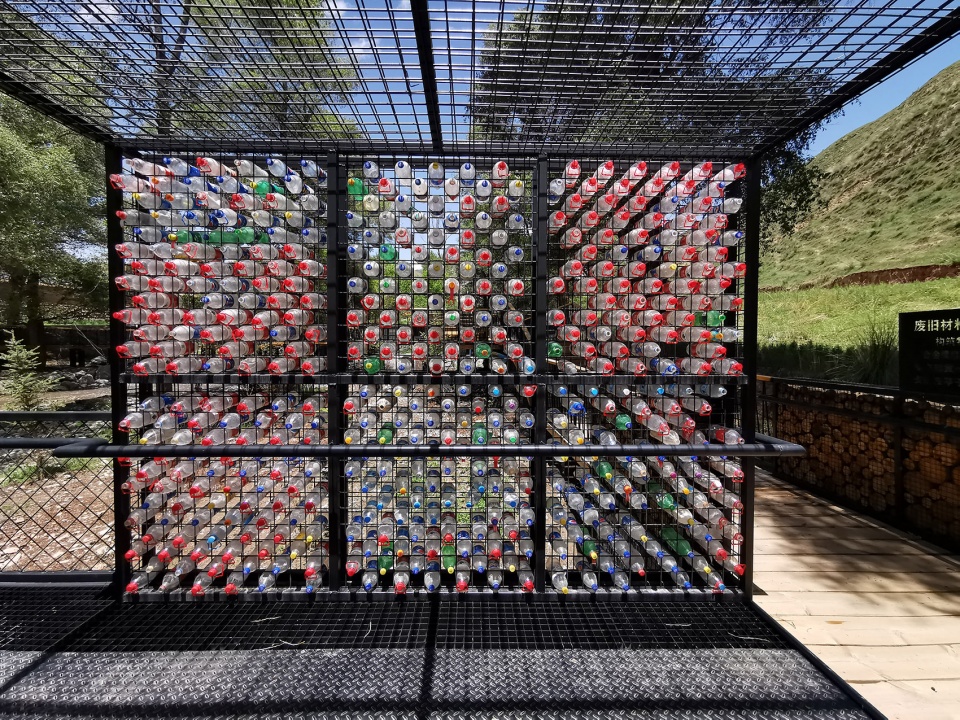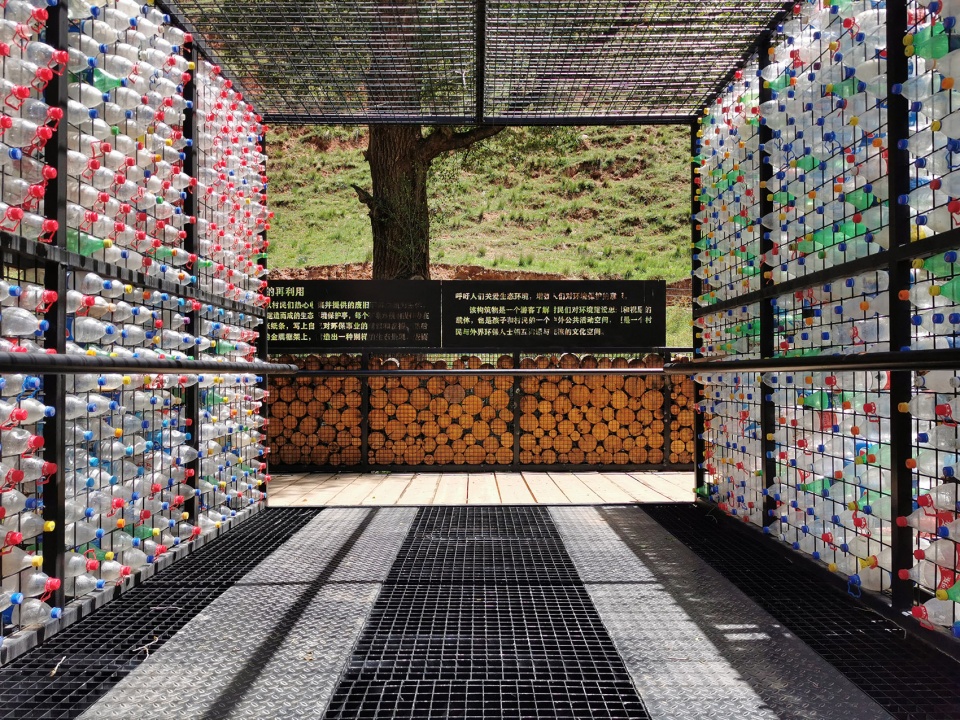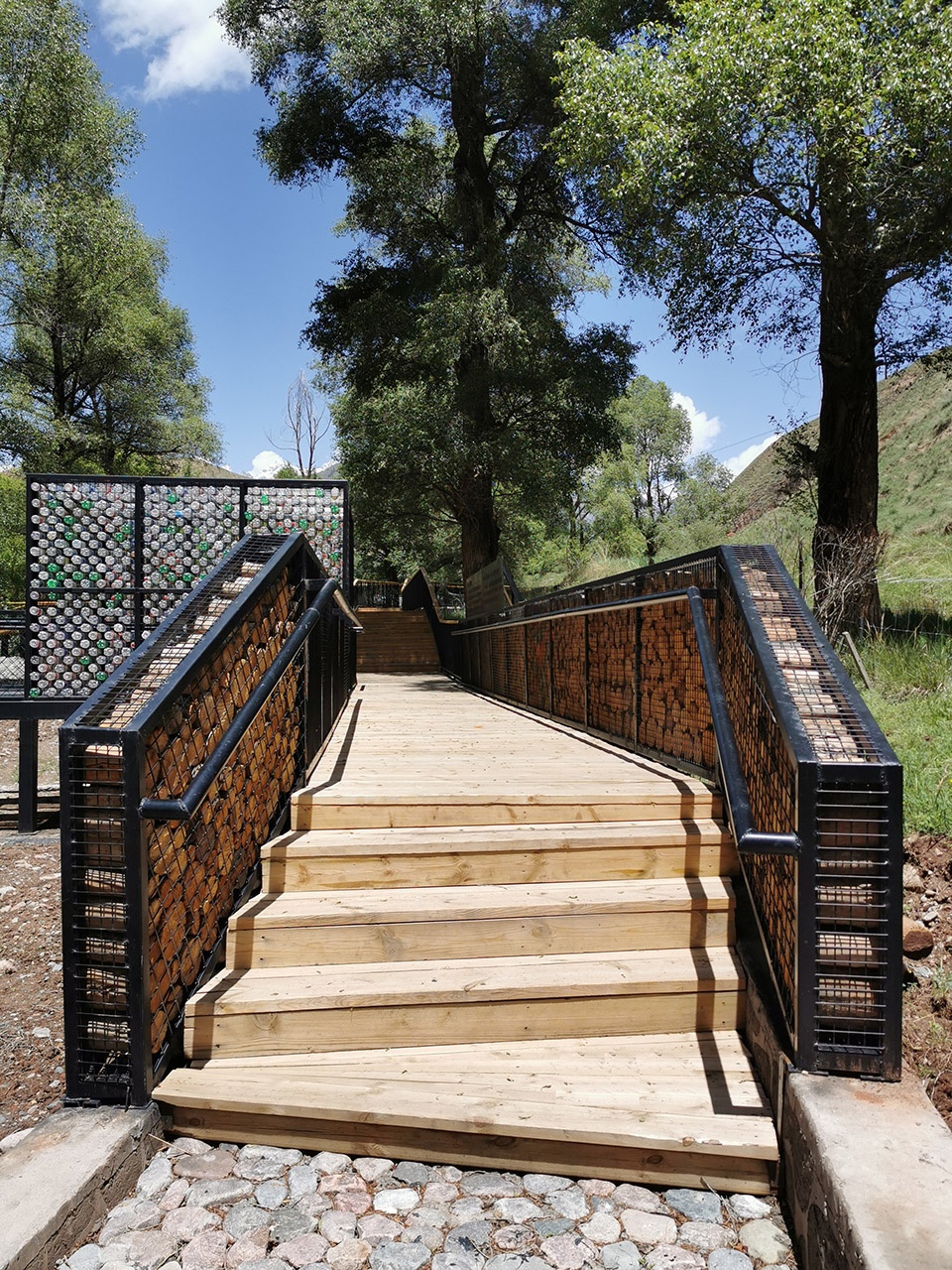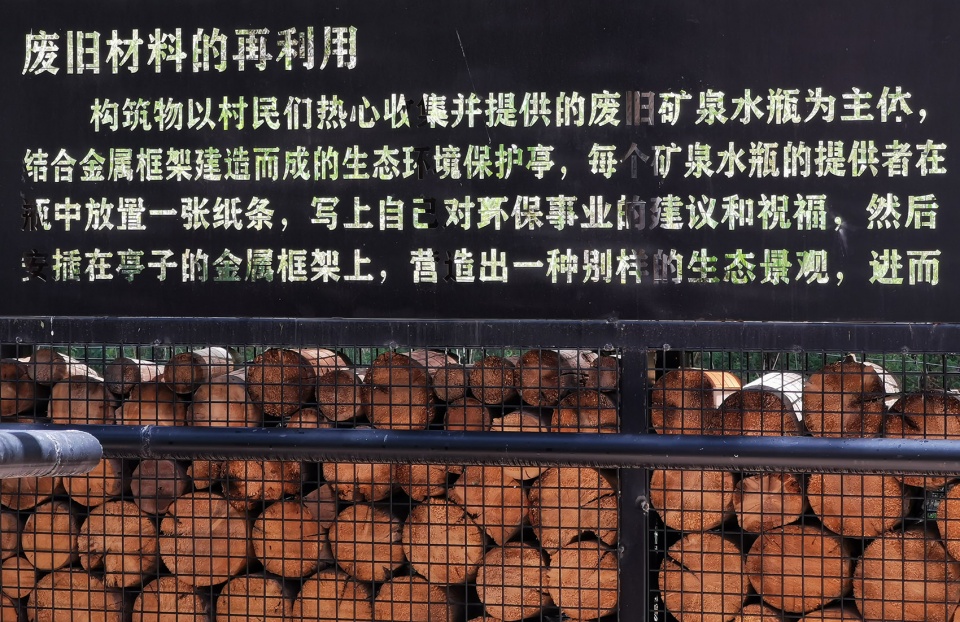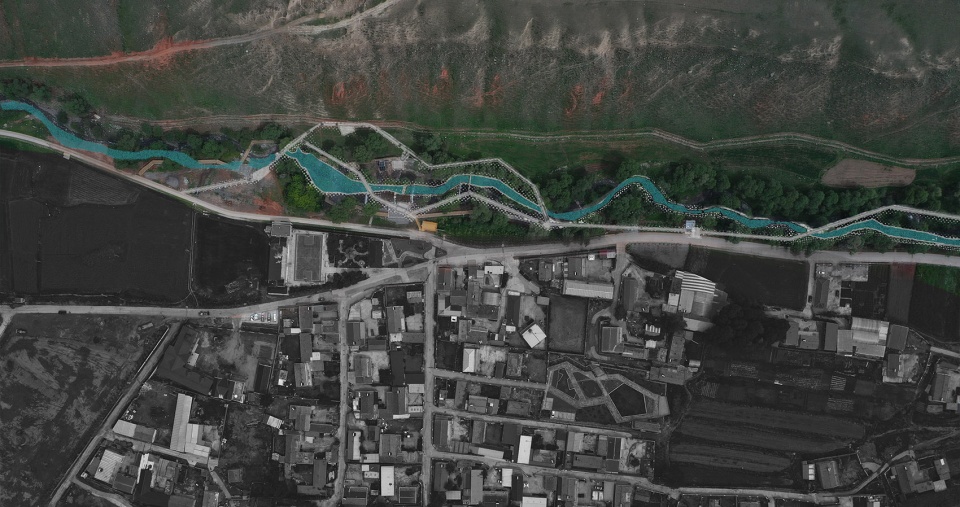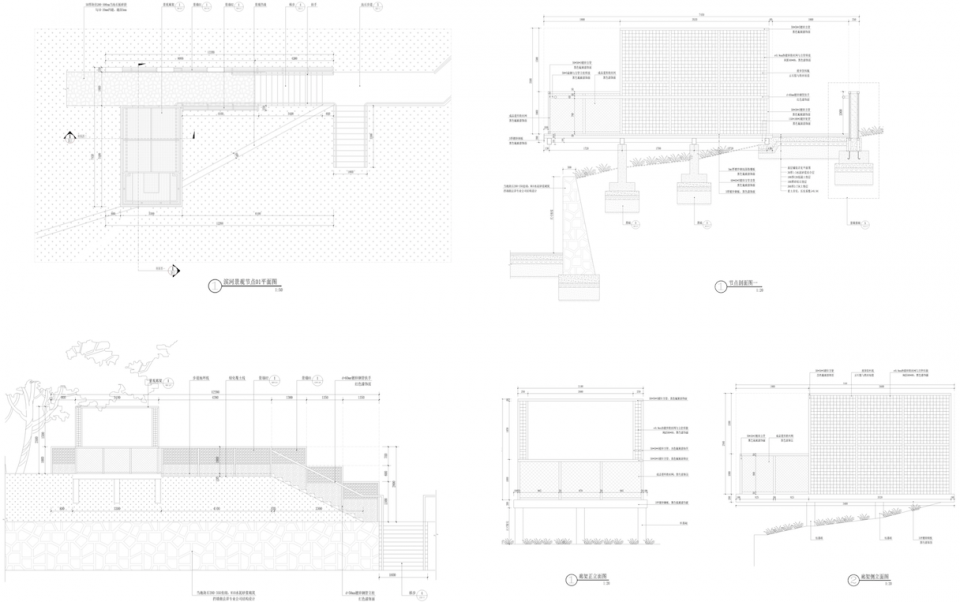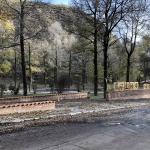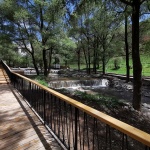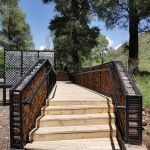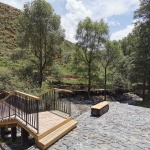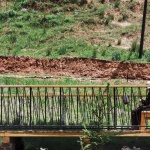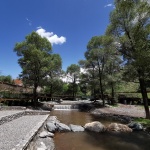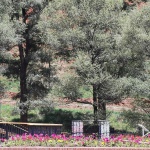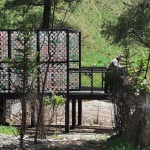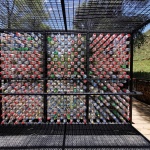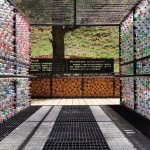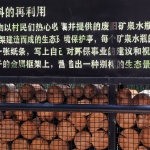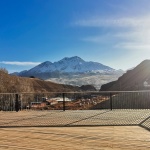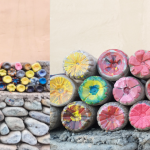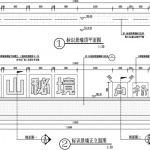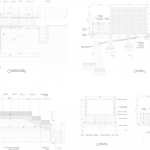非常感谢 中国乡建院 予gooood分享以下内容。更多关于:China New Rural Planning and Design on gooood
Appreciation towards China New Rural Planning and Design for providing the following description:
设计缘起
The origin of design
青海省祁连县白杨沟村位于青海湖北线景区卓尔山脚下,沿卓尔山谷地分布着成片的龙鳞大白杨。这里夏季光照充足,冬季瑞雪封山,周边山上雨雪汇集成溪穿过村庄。村庄的回族、汉族、撒拉族村民与这片白杨林共同生活多年。场地本身最大资源即是分布在溪谷两侧疏密有致的龙鳞白杨林,方案希望通过林间路径与主题景观的精心布局突出这片林地高低错落的场地特征,为村庄营造一系列舒适自然的公共活动空间。
▼入口景观,充分利用起场地最大的资源,龙鳞白杨林,entrance, take the advantage of the largest resource of the site , the dense poplar forest ©钱知洋
▼入口标识, sign at the entrance ©钱知洋
Populus alba village, Qilian County, Qinghai Province, is located at the foot of zhuo’er mountain, a scenic spot along the Qinghai Hubei line. There is plenty of light in summer and snow in winter. The surrounding mountains are covered with rain and snow, and the streams pass through the village. The Hui, Han and Salar villagers of the village have lived together with this poplar forest for many years. The largest resource of the site itself is the dense poplar forest distributed on both sides of the valley. The plan hopes to highlight the site characteristics of the scattered forest land through the careful layout of the forest path and theme landscape, and create a series of comfortable and natural public activity spaces for the village.
▼从场地眺望远处的雪山和村舍,view the snow mountains and cottages from the site ©钱知洋
场景构建
Scene construction
在思考白杨沟村公共空间的未来场景时,我们提出了“诗意自然、邻里舒适”两个层面的场景构建。场景设计灵感源于传统造园因借之法,以近乎消隐的栈道,从村口到白杨林再到青稞田旁打造了一系列展示龙鳞白杨的行望路径,籍山林以造深景;时而横卧跨水,时而蜿蜒入林,引人入胜于雪山溪流、白杨林间的秘境花园场景中。
When thinking about the future scene of public space in Populus alba village, we put forward two levels of scene construction: “poetic nature, neighborhood comfort”. The inspiration of the scene design comes from the traditional garden making method. With the nearly hidden plank road, a series of walking paths are built from the village entrance to the poplar forest and then to the highland barley field to show the dragon scale poplar, which can be used to create a deep view by the mountain forest; sometimes lying across the water, sometimes winding into the forest, fascinating in the natural poetic scene among the snow mountain, Danxia and poplar forest.
▼穿于林间的栈道,plank road within the forest ©钱知洋
邻里舒适场景建立在雪山汇集而成的溪流在西北高原弥足珍贵。设计希望抓住这片场地在退耕还草后的水环境再造机遇,重新构建舒适的亲水邻里公共空间,采取理水以睦邻的策略,针对现有水体进行了三段集中整治,形成具有跌落感的开合水溪关系,以栈道曲折临水穿于其间,借局部高差与林中成台地通幽之感,力求狭长场地中的“小中见大”。林间步行系统也与村民广场形成了公共生活核心区的小闭环交通,增加了复合性功能的亲水公共活动场地,改善了周边村民的可达性与居住环境,提升村庄的邻里空间亲水舒适性。
The neighborhood comfortable scene is built on the stream of snow mountain, which is precious in the northwest of Takahara. The design hopes to seize the opportunity of water environment reconstruction after returning farmland to grassland, reconstruct the comfortable hydrophilic neighborhood public space, adopt the strategy of water management and good neighborhoods, carry out three sections of centralized treatment for the existing water body, form the open and close water stream relationship with a sense of falling, and pass through it with a zigzag stack road facing the water, and strive to narrow and long field by taking advantage of the sense of local height difference and the secluded platform in the forest In the middle of the earth, we can see the big from the small. The inter forest walking system also forms a small closed-loop traffic in the core area of public life with the villagers’ Square, adding a hydrophilic public activity site with composite functions, improving the accessibility and living environment of the surrounding villagers, and improving the hydrophilic comfort of the neighborhood space of the village.
▼具有跌落感的开合水溪关系,open and close water stream relationship with a sense of falling ©钱知洋
▼以栈道曲折临水穿于溪间,pass through the water with a zigzag stack road ©钱知洋
▼增加亲水公共活动场地,adding hydrophilic public activity site ©钱知洋
环保装置
Environmental protection device
白杨沟村属于多民族聚居的环境特色保护型村庄。我们在设计之初通过走访调研发现留守民参与村庄建设的意愿强烈,但不知从何入手,因此设计团队在建设前期进行了一场从废物利用入手的艺术装置营造实验。景观建筑师与社区营造团队携手以一场“会说话的墙”的活动展开了关于村庄环境治理的互动装置构思,环抱装置的材料就是游客丢在村庄的饮料瓶,因为塑料制品在地下掩埋超过一百年也无法分解,我们发动村民在搜集来的饮料瓶上进行彩绘,用这些百年无法分解的瓶子美化院墙与建造景观设施,以一系列参与式的设计艺术活动展示“废弃物”的另一面,重新凝聚关于美好家园环境保护与治理的民族共识,建立村民与自然环境的集体记忆,营造共享共建的村庄环境治理小闭环。
Populus alba village is a multi-ethnic village with environmental characteristics. At the beginning of the design, we found that the left behind people had strong willingness to participate in the village construction, but we didn’t know where to start, so the design team carried out a field space construction experiment from behavior in the early stage of the construction. The landscape architect and the community construction team worked hand in hand with a “talking wall” activity to launch an interaction on the environmental governance of the large white poplar here. The interactive media material is the beverage bottles that tourists left in the village. Because the products can’t be decomposed even if they have been buried underground for more than 100 years, we mobilized the villagers to paint on the collected beverage bottles, which can’t be divided in 100 years Jiedi’s bottle beautifying courtyard wall and environmental governance theme landscape node, with a series of participatory design activities to show the other side of “garbage”, re agglomerate the national consensus on the environmental protection and governance of a beautiful home, establish the collective memory of villagers and the natural environment, and create a small closed loop of shared and co built village environmental governance.
▼彩绘饮料瓶美化院墙,painted beverage bottle to beautify the courtyard wall ©钱知洋
场所与材料
Place and materials
白杨沟村龙鳞大白杨片区的公共空间在建成后为村民提供从室内到户外公共环境散步、小憩、驻足、游戏、集会、交往所需的系列场所。场所的户外家具多选用饮品塑料瓶、拆掉的老旧栏杆等废弃物加以利用,空间界面则以钢木、红砖、山石材料在自然环境中的运用来强化人工与自然的空间界定,争取为村里老人、妇女、儿童群体创造更多有趣的活动场所。
After the completion of the public space in the Populus alba area of Populus alba village, a series of places are provided for villagers to walk, rest, stop, play, meet and communicate in the public environment from indoor to outdoor. The outdoor furniture of the place mostly uses the wastes such as drink plastic bottles and old railings. The space interface uses steel wood, red brick and stone materials in the natural environment to strengthen the space definition of artificial and natural, and strive to create more interesting activity places for the elderly, women and children in the village.
▼利用饮料瓶制作户外设施,making outdoor facilities using beverage bottles ©钱知洋
▼饮料瓶固定在金属网内,形成特殊的立面,beverage bottle is fixed in the metal net to form a special facade ©钱知洋
▼钢木扶手与栈道,steel wood handrail and plank ©钱知洋
▼废物再利用,reuse of waste ©钱知洋
▼场地平面,master plan ©中国乡建院原乡工作室
▼细节图,construction detail ©中国乡建院原乡工作室
设计单位:中国乡建院原乡工作室(H.T.)
机构网站:www.cnrpd.com
工作室总监:赵金祥
完成年份:2020.03
摄影师:钱知洋
项目位置:青海省祁连县八宝镇白杨沟村
客户名称:祁连县八宝镇人民政府
项目参与者:孙志伟、张杰、钱知洋、刘磊、张春梅、赵丹、黄晶
合作方:中国乡建院适用工作室、中国乡建院社区营造团队
邮箱:zhaojinxiang@cnrpd.com
致谢:感谢祁连县各级政府及相关部门及施工方的大力支持,特别鸣谢设计师孙志伟、张杰的长期驻场施工指导。
Project name: The construction of rural public space in the forest of Populus alba
Design studio: HomeTown studio of cnrpd (www.cnrpd.com)
Design Director: Zhao Jinxiang
Client: People’s Government of Babao Town, Qilian County
Construction firm: f.i.t studio of cnrpd、Community building team of cnrpd
Project location: Babao Town, Qilian County, Qinghai Province , China
Photographer: Qian Zhiyang
Design time: September 2018
Completion: March,,2020
More: 中国乡建院。更多关于:China New Rural Planning and Design on gooood

